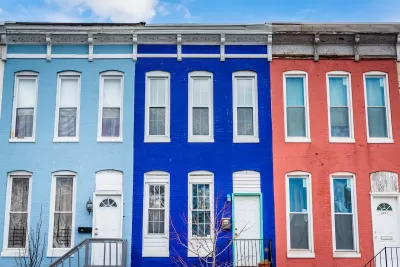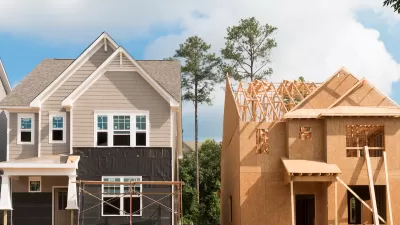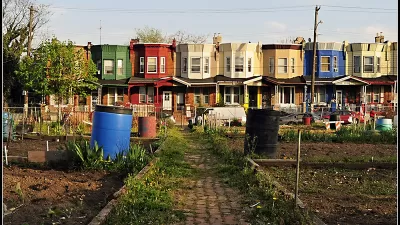The row house is ubiquitous in the two cities, but their policies on design and preservation vary widely.

In a piece for North Penn Now, Chris Bates highlights the importance of row houses in Philadelphia and Baltimore. “While both cities are celebrated for their row houses, their approaches to design, history, and preservation differ significantly.” Where Philadelphia has a wide range of styles and designs, Baltimore’s row houses are much more uniform. Baltimore also struggles with a high vacancy rate, leading the city to focus on revitalization efforts.
According to Bates, “These homes, characterized by their uniform design and shared walls, have defined the character of many neighborhoods.” Bates outlines the significance, evolution, and legacy of the typology, noting that row houses are “a hallmark of urban planning in densely populated cities, where maximizing land use and accommodating growing populations are essential.”
Row houses offer space efficiency, uniformity, and adaptability. “Today, row houses remain a popular housing option in urban areas due to their historical charm and practicality.” Through their endurance over centuries, they offer a sustainable model for future urban form.
FULL STORY: Philadelphia And Baltimore: A Tale Of Two Cities Built On Row Houses

Planetizen Federal Action Tracker
A weekly monitor of how Trump’s orders and actions are impacting planners and planning in America.

Trump Administration Could Effectively End Housing Voucher Program
Federal officials are eyeing major cuts to the Section 8 program that helps millions of low-income households pay rent.

The 120 Year Old Tiny Home Villages That Sheltered San Francisco’s Earthquake Refugees
More than a century ago, San Francisco mobilized to house thousands of residents displaced by the 1906 earthquake. Could their strategy offer a model for the present?

Missouri Law Would Ban Protections for Housing Voucher Users
A state law seeks to overturn source-of-income discrimination bans passed by several Missouri cities.

Op-Ed: Looking for Efficiency? Fund Intercity Buses
Much less expensive than rail, intercity buses serve millions of Americans every year, but public subsidies are lacking.

Philadelphia Councilmember Proposes Transit Access Fund
The plan would allocate 0.5 percent of the general fund toward mobility subsidies for low-income households.
Urban Design for Planners 1: Software Tools
This six-course series explores essential urban design concepts using open source software and equips planners with the tools they need to participate fully in the urban design process.
Planning for Universal Design
Learn the tools for implementing Universal Design in planning regulations.
Ada County Highway District
Clanton & Associates, Inc.
Jessamine County Fiscal Court
Institute for Housing and Urban Development Studies (IHS)
City of Grandview
Harvard GSD Executive Education
Toledo-Lucas County Plan Commissions
Salt Lake City
NYU Wagner Graduate School of Public Service





























